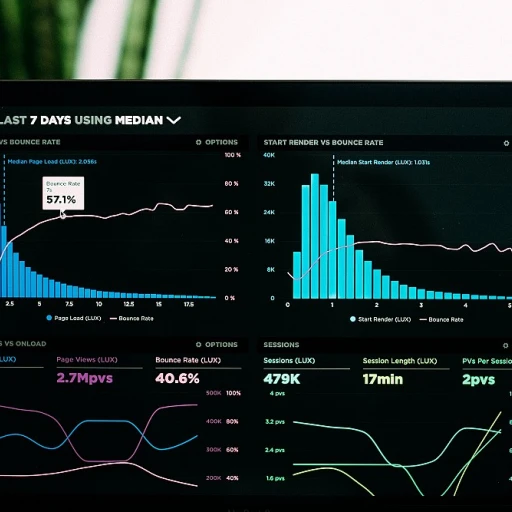
Understanding 'Forward vs. Next Story' in SEO
Decoding Forward and Next Story Concepts in SEO
In the rapidly evolving digital landscape, the concepts of "forward" and "next story" have gained prominence in Search Engine Optimization (SEO) strategies, mirroring similar mechanisms found in Instagram stories. These actions are not only related to how users interact with Instagram content but also provide insights into audience behavior and content optimization. Firstly, understanding "forward" metrics, resembling the "tap forward" on Instagram stories, can reveal how readers progress through digital content. This taps into the behavior of swiftly moving through posts, offering insights into content relevance and viewer interest. A high number of "taps forward" might indicate that users are not fully engaged, requiring SEO specialists to refine content for better retention rates. On the other hand, the "next story" concept in SEO involves anticipating user demand, akin to how users navigate through multiple stories on social media platforms. "Next story" metrics help content creators anticipate what users will want to see next, enabling them to craft a more engaging story journey, maintaining a high retention rate among followers. As we delve deeper into AI's role in shaping these strategies, it's crucial to recognize that these metrics can significantly enhance content personalization and predictive analytics. Notably, tools used for "stories analytics" allow marketers to gauge reach rate and viewer engagement effectively. For further exploration of audience behavior and its potential influence on AI-driven SEO, the concept of audience interaction with social media stories offers a wealth of information. You can delve deeper into this topic by exploring how these insights shape audience lab potentials in the realm of AI-enhanced SEO strategies.The Role of AI in Shaping SEO Strategies
Reshaping SEO Through Artificial Intelligence
Artificial Intelligence is revolutionizing SEO strategies in unprecedented ways. AI is not just a tool but a strategic partner in recognizing and interpreting user behavior across platforms like Instagram and other social media networks. With the high number of interactions happening every second on these platforms, AI utilizes vast amounts of data to gain actionable insights.
From Data to Actionable Insights
AI helps marketers in sifting through the massive data generated by user interactions such as story taps – whether it’s the number times followers tap forward on an Instagram story or how often a post's viewership drops, AI analytics can transform these metrics into valuable strategies. The reach rate and retention rate are crucial indicators for gauging a story's impact and effectiveness. With this, AI can tailor SEO strategies by predicting audience inclinations and optimizing content to align with these preferences.
Personalized Experience with AI
The application of AI in shaping SEO strategies extends into personalization. Each viewer on Instagram, for instance, is unique, with a distinct interaction pattern with stories. AI uses these patterns to present personalized content that meets the audience's expectations better. By analyzing story analytics and understanding the focus on different metrics like forward and next story rates, businesses can enhance user engagement by making informed content decisions.
Overcoming SEO Challenges with AI
However, integrating AI into SEO is not without its challenges. The main hurdles include maintaining accuracy in predictions and aligning AI-generated suggestions with actual human behavior on social platforms like Instagram. Despite these challenges, AI continues to offer huge potential, making it an indispensable tool in modern digital marketing strategies.
Predictive Analytics: The Future of SEO
Leveraging Predictive Models for SEO Optimization
In the ever-evolving landscape of search engine optimization, predictive analytics has become a vital tool in anticipating changes in user behavior and search trends. By utilizing advanced machine learning algorithms, businesses can analyze sizable amounts of data to identify patterns that can drive future SEO strategies. The ability to predict which user activities will likely lead to conversions is pivotal. Instagram, an impactful social media platform with its story analytics, provides invaluable insights. For instance, understanding the number of taps forward on an Instagram story can indicate viewer engagement. These metrics, including the rate at which users tap forward next in a series of stories, help in tailoring content that maintains a higher retention rate among followers. Various Instagram insights offer a deeper look into content effectiveness. By monitoring likes, viewer reach, and engagement rates, businesses can fine-tune their strategies to better meet user expectations—comparable to the predictive models used in SEO to maximize content reach. Through predictive analytics, companies can assess which types of content perform well. For example, analyzing when users are more likely to consume photo videos versus text-based posts can inform the timing and nature of posts, ensuring maximum visibility and reach. Predictive techniques empower businesses to not just respond to trends but to anticipate and capitalize on them, effectively increasing the forward rate of social engagement. As we look to the future, harnessing predictive analytics will play a pivotal role in aligning content strategies with audience expectations. For those seeking to delve deeper into the upcoming trends in social media and how they impact SEO, understanding the multiplier effect for social media companies can provide significant insights into enhancing audience engagement and driving greater reach.Content Personalization: Meeting User Expectations
Targeted User Experience: Tailoring Content for Audience Expectations
In an era where users are bombarded with content every day, standing out requires not just visibility, but relevance and personalization. Leveraging AI for content personalization is becoming an essential tactic for meeting the evolving demands of viewers and maintaining a competitive reach rate. AI tools analyze a plethora of data points across social media platforms, including Instagram stories, to gather insights into user behavior. For instance, Instagram analytics provide insights on how followers engage with your content, tracking metrics like story taps, forward rate and retention rate. These analytics help in understanding which stories or posts capture higher viewer engagement, allowing marketers to tailor their content strategies accordingly. Content personalization involves creating specific, targeted content that appeals to the unique interests and preferences of your audience. By aligning your SEO efforts with insights drawn from analytics, you can predict what your audience needs, leading to increased engagement. Consider metrics like the number of times users interact or tap forward on Instagram stories, these insights are valuable in shaping the content that connects with your audience. Marketers are now able to tap into predictive analytics to create more efficient and engaging content strategies. For instance, understanding when and how often to post photos or videos can drastically improve reach and interaction rates. Furthermore, insights on which story viewers are likely to tap next enables adaptive content strategies that can boost audience retention and improve the overall performance of social media accounts. As the digital landscape continues to evolve, it becomes crucial to adapt SEO strategies to not just anticipate, but exceed user expectations. Adopting intelligent content personalization approaches can ensure that your SEO initiatives are set to thrive in the AI-driven future.Challenges in Implementing AI for SEO
Navigating the Intricacies of AI Integration
While integrating artificial intelligence into SEO presents attractive opportunities, it also brings its share of challenges. Employing AI to refine strategies, enhance content, and analyze metrics such as Instagram story engagement involves overcoming several hurdles. Content creators and digital marketers must understand these challenges to get the most out of their AI-powered tools.
Data Management and Relevance
One of the main challenges lies in managing the vast amounts of data AI systems process to deliver insights. Ensuring that the data collected is relevant and accurate can impact your ability to analyze metrics like reach rate and story taps accurately. Tools that generate insights into the number of times viewers engage with an Instagram story, for example, depend on reliable data. Any discrepancies can mislead content decisions, affecting overall social media strategy.
Interpreting Complex Insights
AI-powered analytics offer rich insights into user behavior, such as how often viewers tap forward in an Instagram story. However, interpreting these insights requires expertise and understanding of social media dynamics. Misinterpretation can lead to misguided strategies that might not resonate with the intended audience. For instance, a high forward rate might indicate that content needs more engaging elements to retain viewers.
Technological Investment and Adaptation
Investing in the right technology is crucial but can be daunting. Businesses must allocate resources to both purchase and maintain AI systems to support their SEO efforts. It requires balancing technological needs with available budgets while ensuring that the selected solutions adapt effectively to ever-evolving SEO trends and Instagram analytics.
Ensuring Data Privacy and Compliance
Lastly, AI systems must adhere to data privacy regulations. Collecting and processing social media data, including Instagram insights and story analytics, must comply with legal requirements. Protecting personal data while leveraging AI for SEO remains a delicate balance that companies must maintain to avoid potential legal implications.
Future Trends in AI and SEO
Embracing Tomorrow’s SEO Landscape
As artificial intelligence continues to evolve, its influence on search engine optimization will undoubtedly expand in unprecedented ways. Looking ahead, it’s crucial for businesses to recognize the importance of keeping pace with these changes to optimize their reach and engage more effectively with their target audience.
One promising direction in AI-driven SEO is the integration of advanced analytics to provide insights into user behavior. By harnessing this capability, companies can fine-tune their strategies, gaining a deeper understanding of actions like instagram story taps and forward rate. This data will become a pivotal tool for assessing user engagement, enabling businesses to optimize their social media content delivery.
Furthermore, AI brings an innovative approach to managing content personalization. Previously discussed concepts around enhancing user experiences through personalized content can revolutionize how brands connect with their audience. Leveraging AI’s ability to analyze vast amounts of data, businesses can predict and respond to changing user preferences, ultimately increasing their retention rate and enhancing story analytics.
Despite its potential, it's essential to be mindful of the challenges that accompany AI integration. Companies need to develop robust frameworks to manage data ethically while ensuring AI systems operate transparently. Moreover, as AI capabilities expand, businesses must stay informed about the latest metrics and tools to tackle the dynamic SEO environment effectively.
The rapidly shifting SEO landscape requires that businesses remain agile and strategic. Understanding the nuances between forward vs. next story in user interactions and the influence of AI on content strategies will inform their path forward. As such, embracing AI’s potential today equips businesses to thrive in tomorrow’s competitive digital arenas.













